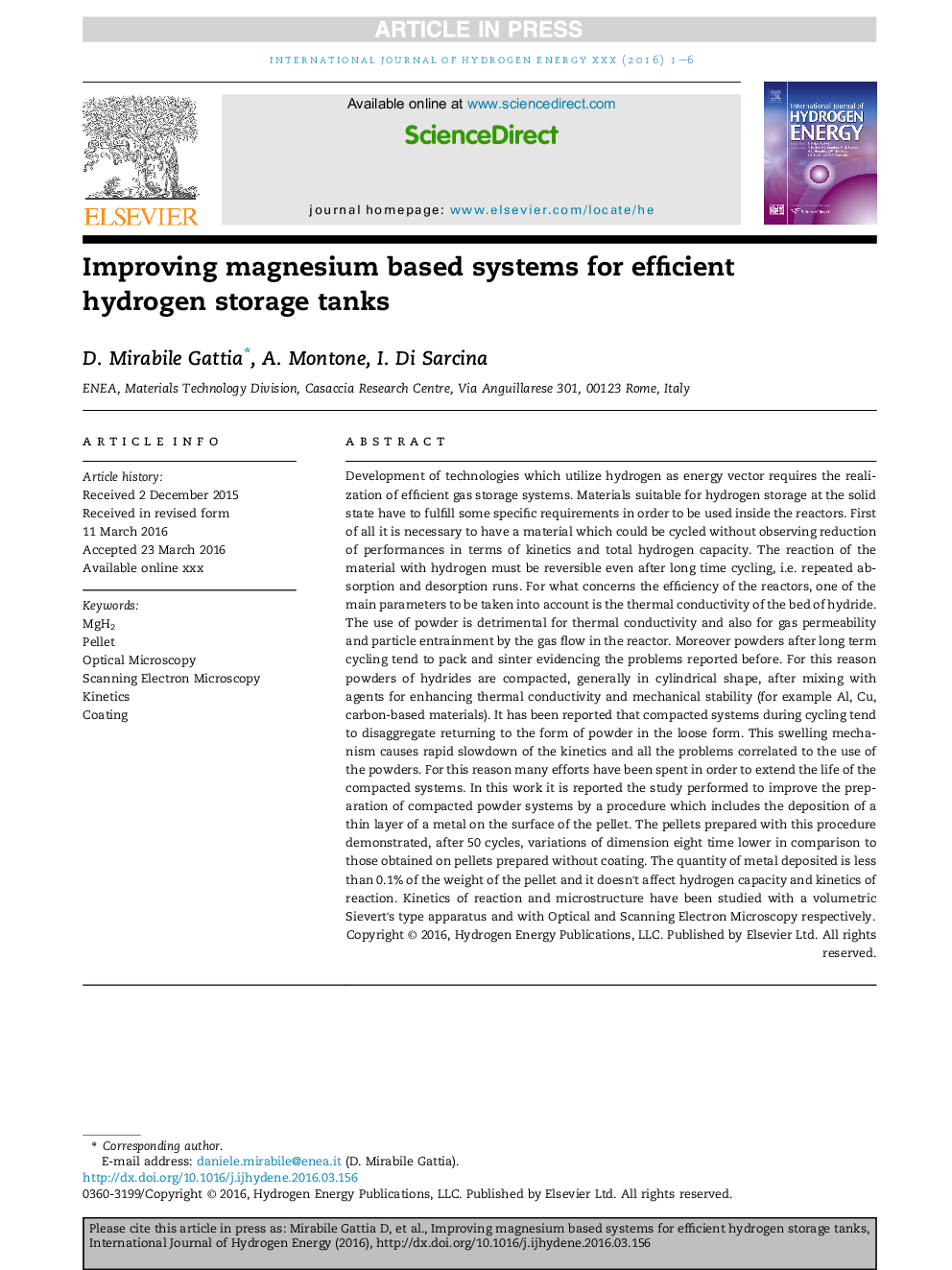| کد مقاله | کد نشریه | سال انتشار | مقاله انگلیسی | نسخه تمام متن |
|---|---|---|---|---|
| 7709923 | 1497393 | 2016 | 6 صفحه PDF | دانلود رایگان |
عنوان انگلیسی مقاله ISI
Improving magnesium based systems for efficient hydrogen storage tanks
ترجمه فارسی عنوان
بهبود سیستم های مبتنی بر منیزیم برای مخازن ذخیره سازی هیدرولیکی کارآمد
دانلود مقاله + سفارش ترجمه
دانلود مقاله ISI انگلیسی
رایگان برای ایرانیان
کلمات کلیدی
موضوعات مرتبط
مهندسی و علوم پایه
شیمی
الکتروشیمی
چکیده انگلیسی
Development of technologies which utilize hydrogen as energy vector requires the realization of efficient gas storage systems. Materials suitable for hydrogen storage at the solid state have to fulfill some specific requirements in order to be used inside the reactors. First of all it is necessary to have a material which could be cycled without observing reduction of performances in terms of kinetics and total hydrogen capacity. The reaction of the material with hydrogen must be reversible even after long time cycling, i.e. repeated absorption and desorption runs. For what concerns the efficiency of the reactors, one of the main parameters to be taken into account is the thermal conductivity of the bed of hydride. The use of powder is detrimental for thermal conductivity and also for gas permeability and particle entrainment by the gas flow in the reactor. Moreover powders after long term cycling tend to pack and sinter evidencing the problems reported before. For this reason powders of hydrides are compacted, generally in cylindrical shape, after mixing with agents for enhancing thermal conductivity and mechanical stability (for example Al, Cu, carbon-based materials). It has been reported that compacted systems during cycling tend to disaggregate returning to the form of powder in the loose form. This swelling mechanism causes rapid slowdown of the kinetics and all the problems correlated to the use of the powders. For this reason many efforts have been spent in order to extend the life of the compacted systems. In this work it is reported the study performed to improve the preparation of compacted powder systems by a procedure which includes the deposition of a thin layer of a metal on the surface of the pellet. The pellets prepared with this procedure demonstrated, after 50 cycles, variations of dimension eight time lower in comparison to those obtained on pellets prepared without coating. The quantity of metal deposited is less than 0.1% of the weight of the pellet and it doesn't affect hydrogen capacity and kinetics of reaction. Kinetics of reaction and microstructure have been studied with a volumetric Sievert's type apparatus and with Optical and Scanning Electron Microscopy respectively.
ناشر
Database: Elsevier - ScienceDirect (ساینس دایرکت)
Journal: International Journal of Hydrogen Energy - Volume 41, Issue 32, 24 August 2016, Pages 14455-14460
Journal: International Journal of Hydrogen Energy - Volume 41, Issue 32, 24 August 2016, Pages 14455-14460
نویسندگان
D. Mirabile Gattia, A. Montone, I. Di Sarcina,
